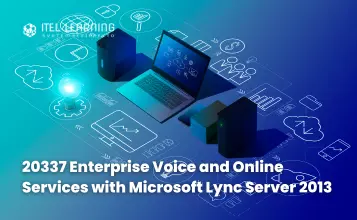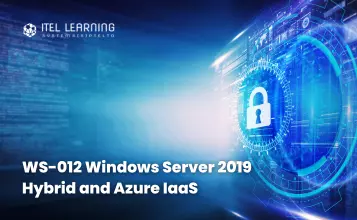Overview
This course teaches developers how to create end-to-end solutions in Microsoft Azure. Students will learn how to implement Azure compute solutions, create Azure Functions, implement and manage web apps, develop solutions utilizing Azure storage, implement authentication and authorization, and secure their solutions by using KeyVault and Managed Identities. Students will also learn how to connect to and consume Azure services and third-party services, and include event- and message-based models in their solutions. The course also covers monitoring, troubleshooting, and optimizing Azure solutions.
Prerequisites
To be successful in this course, learners should have the following:
- Hands-on experience with Azure IaaS and PaaS solutions, and the Azure Portal.
- Experience writing in an Azure supported language at the intermediate level. (C#, JavaScript, Python, or Java)
- Ability to write code to connect and perform operations on, a SQL or NoSQL database product. (SQL Server, Oracle, MongoDB, Cassandra or similar)
- Experience writing code to handle authentication, authorization, and other security principles at the intermediate level.
- A general understanding of HTML, the HTTP protocol and REST API interfaces.
Course Duration
5 Days
Course Outline
- Examine Azure App Service
- Examine Azure App Service plans
- Deploy to App Service
- Explore authentication and authorization in App Service
- Discover App Service networking features
- Exercise: Create a stativ HTML web app by using Azure Cloud Shell
- Configure application settings
- Configure general settings
- Configure path mappings
- Enable diagnostic logging
- Configure security certificates
- Manage app features
- Examine autoscale factors
- Identify autoscale factors
- Enable autoscale in App Service
- Explore autoscale best practices
- Explore staging environments
- Examine slot swapping
- Swap deployment slots
- Route traffic in App Service
- Discover Azure Functions
- Compare Azure Functions hosting options
- Scale Azure Functions
- Explore Azure Functions development
- Create triggers and bindings
- Connect functions to Azure services
- Exercise: Create an Azure Function by using Visual Studio Code
- Explore Durable Functions app patterns
- Discover the four function types
- Explore task hubs
- Explore durable orchestrations
- Control timing in Durable Functions
- Send and wait for events
- Explore Azure Blob storage
- Discover Azure Blob storage resource types
- Explore Azure Storage security features
- Evaluate Azure Storage redundancy options
- Exercise: Create a block blob storage account
- Explore the Azure Blob storage lifecycle
- Discover Blob storage lifecycle policies
- Implement Blob storage lifecycle policies
- Rehydrate blob data from the archive tier
- Explore Azure Blob storage client library
- Exercise: Create Blob storage resources by using the .NET client library
- Manage container properties and metadata by using .NET
- Set and retrieve properties and metadata for blob resources by using REST
- Identify key benefits of Azure Cosmos DB
- Explore the resource hierarchy
- Explore consistency levels
- Choose the right consistency level
- Explore supported APIs
- Discover request units
- Exercise: Create Azure Cosmos DB resources by using the Azure portal
- Explore partitions
- Choose a partitions key
- Create a synthetic partition key
- Explore Microsoft .NET SDK v3 for Azure Cosmos DB
- Exercise: Create resources by using the Microsoft .NET SDK v3
- Create stored procedures
- Create triggers and user-defined functions
- Explore Azure virtual machines
- Compare virtual machine availability options
- Determine appropriate virtual machine size
- Exercise: Create a virtual machine by using the Azure CLI
- Explore Azure Resource Manager
- Deploy multi-tiered solutions
- Explore conditional deployment
- Set the correct deployment mode
- Exercise: Create and deploy Azure Resource Manager templates by using Visual Studio
- Discover the Azure Container Registry
- Explore storage capabilities
- Build and manage containers with tasks
- Explore elements of a Dockerfile
- Exercise: Build and run a container image by using Azure Container Registry Tasks
- Explore Azure Container Instances
- Exercise: Deploy a container instance by using the Azure CLI
- Run containerized tasks with restart policies
- Set environment variables in container instances
- Mount an Azure file share in Azure Container Instances
- Explore the Microsoft identity platform
- Explore service principals
- Discover permissions and consent
- Discover conditional access
- Explore the Microsoft Authentication Library
- Initialize client applications
- Exercise: Implement interactive authentication by using MSAL.NET
- Discover shared access signatures
- Explore stored access policies
- Discover Microsoft Graph
- Query Microsoft Graph by using REST
- Query Microsoft Graph by using SDKs
- Apply best practices to Microsoft Graph
- Explore Azure Key Vault
- Discover Azure Key Vault best practices
- Authenticate to Azure Key Vault
- Exercise: Set and retrieve a secret from Azure Key Vault by using Azure CLI
- Explore managed identities
- Discover the managed identities authentication flow
- Configure managed identities
- Acquire an access token
- Explore the Azure App Configuration service
- Create paired keys and values
- Manage application features
- Secure app configuration data
- Discover the API Management service
- Explore API gateways
- Explore API Management policies
- Create advanced policies
- Secure APIs by using subscriptions
- Secure APIs by using certificates
- Exercise: Create a backend API
- Explore Azure Event Grid
- Discover event schemas
- Explore event delivery durability
- Control access to events
- Receive events by using webhooks
- Filter events
- Exercsie: Route custom events to web endpoint by using Azure CLI
- Discover Azure Event Hubs
- Explore Event Hubs Capture
- Scale your processing application
- Control access to events
- Perform common operations with the Event Hubs client library
- Choose a message queue solution
- Explore Azure Service Bus
- Discover Service Bus queues, topics, and subscriptions
- Explore Service Bus message payloads and serialization
- Exercise: Send and receive message from a Service Bus queue by using .NET
- Explore Azure Queue Storage
- Create and manage Azure Queue Storage and messages by using .NET
- Explore Azure Monitor
- Explore Application Insights
- Discover log-based metrics
- Instrument an app for monitoring
- Select and availability test
- Troubleshoot app performance by using Application Map
- Explore Azure Cache for Redis
- Configure Azure Cache for Redis
- Interact with Azure Cache for Redis by using .NET
- Exercise: Connect an app to Azure Cache for Redis by using .NET Core
- Explore Azure Content Delivery Networks
- Control cache behaviour on Azure Content Delivery Networks
- Interact with Azure Content Delivery Networks by using .NET








